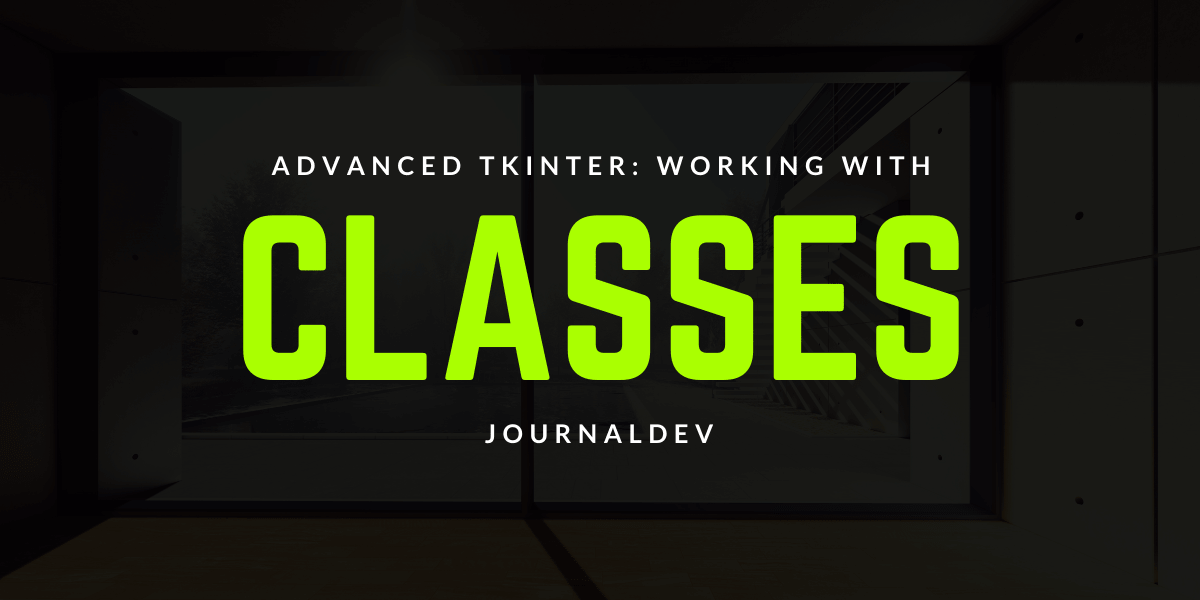Tutorial
Advanced Tkinter: Working with Classes

Today, we’ll be working with classes in Tkinter. If you’ve worked with Tkinter before, you probably know that there’s a whole lot of GUI features that you can use to create an application.
But, while creating applications, you quickly realize that there’s more to the module than what meets the eye.
There’s a lot of hidden features in tkinter, and one of them is the method to use classes in the module.
Setting up the Tkinter Module
There’s no need to install any module, as the tkinter module is a part of the standard Python library.
However, this article will be dealing with a slightly advanced form of the tkinter module, so, it is recommended to go through the beginner series.
So before you move ahead, don’t forget to read through the basic tutorials on TKinter here:
If you’re done with the basic tutorials, let’s get into working with the tkinter module.
In order to work with classes, we’ll need to import the tkinter module.
We’ll also be importing the ttk package separately for ease of use.
Working with Classes in Tkinter
Let us understand how to work with classes in Tkinter. The way the application works is pretty simple.
We first create a root window, on top of which we place a single frame.
In order to make it seem like an application with different windows, we’ll also create a function that switches from one frame to another.
This gives the user an illusion that they are being redirected to a different window/tab, but, are really just switching between frames.
The Frames we’ll be working with are the MainPage, SidePage and CompletionScreen.
The method that we will use for switching between them is the show_frame() method.
Working on the Code
Let’s create a base class from which we’ll access all the other classes/frames to start off.
Extending from the tk.Tk class allows us to work with components that are present in the Tk() class.
1. Initializing the classes
In order to initialize the class, we use the __init__ function. This creates a method that runs itself when we form an object from the class.
In a similar fashion, we are initializing the class through the tk.Tk __init__ as well.
2. Creating a Method to Switch View Frames
Now that we’ve created the __init__ and have also specified the Frames that we’re going to use, we can create a method that switches the frame that we are viewing
3. Creating Multiple Classes for Frames
Now, we create different classes that act as Frames that are switched using the show_frame() method.
If you’ve noticed, these classes are added to the main class, using the self.frames variable.
I’ll be keeping the commands to implement the classes in a __name__=="main", but, you can use it directly as well.
Moving Forward
We are now done with defining the classes and the methods, and can run this script.
This should present you with a tiny window which allows you to switch between frames with the click of a button.
On a higher level, you can even have the functionality to switch between frames in a menu bar on the top of the application.
Conclusion
Working with classes in tkinter module, opens up a lot of doors to working on and creating new applications.
We’ve worked on quite a bit of code today, and just so we’re on the same page, here’s the gist!
If you wish to look at a live example, Check out my project Eisen’s Tickets, which implements a lot of Tkinter features including classes, and works using SQLite3.
References
Thanks for learning with the DigitalOcean Community. Check out our offerings for compute, storage, networking, and managed databases.
While we believe that this content benefits our community, we have not yet thoroughly reviewed it. If you have any suggestions for improvements, please let us know by clicking the “report an issue“ button at the bottom of the tutorial.